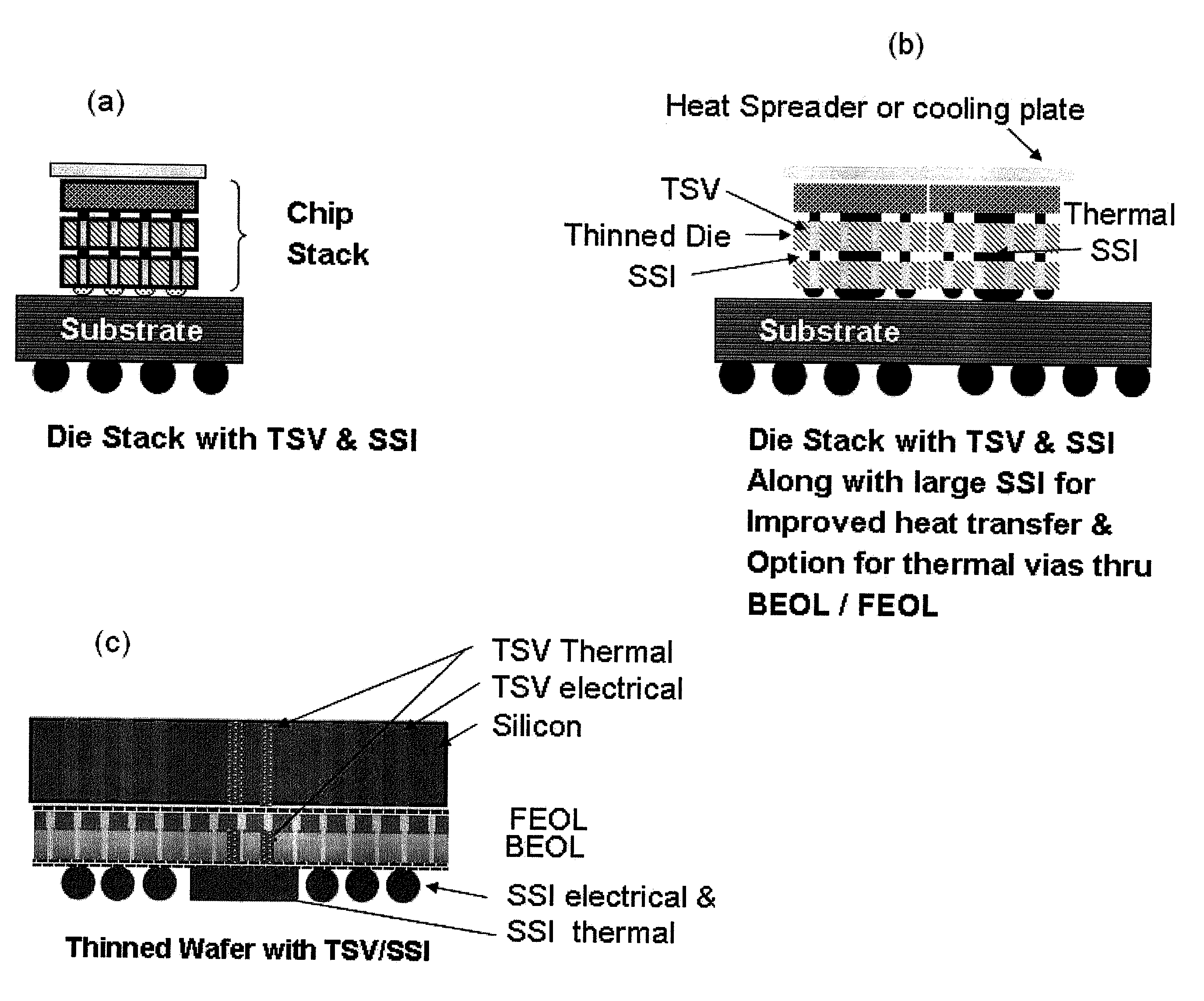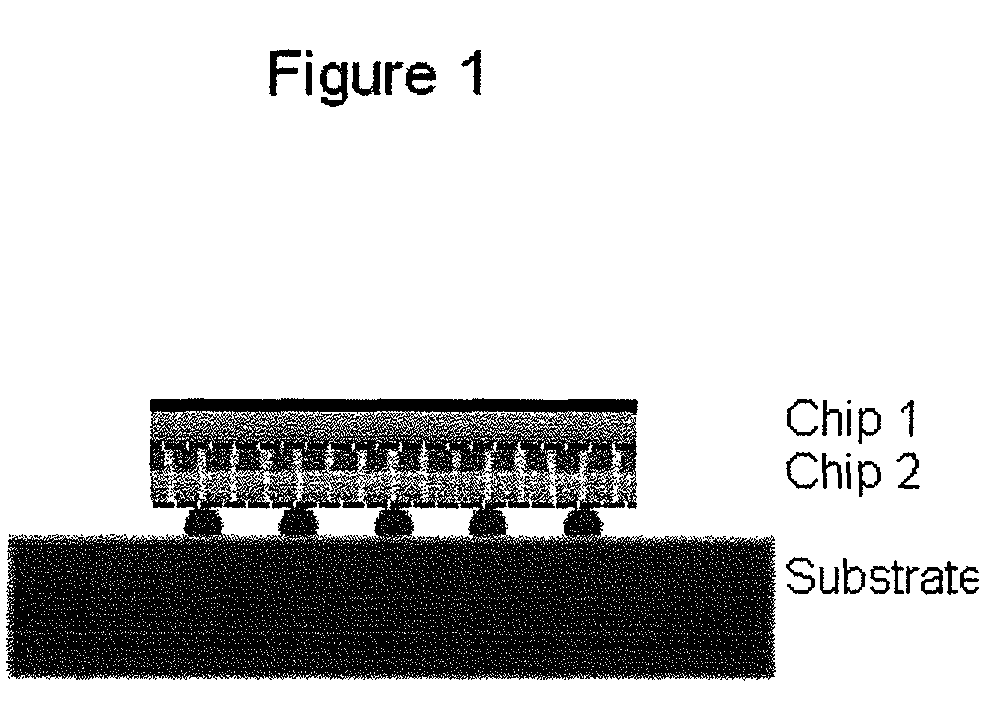3D silicon-silicon die stack structure and method for fine pitch interconnection and vertical heat transport
a technology of silicon-silicon dies and stack structures, applied in the direction of individual semiconductor device testing, semiconductor/solid-state device testing/measurement, instruments, etc., can solve the problems of excessive power required to drive data to and from the chip to the memory, increase system performance, power efficiency and cost, etc., to achieve efficient circuit dense regions, reduce power distribution costs, and large current carrying capacity
- Summary
- Abstract
- Description
- Claims
- Application Information
AI Technical Summary
Benefits of technology
Problems solved by technology
Method used
Image
Examples
Embodiment Construction
[0048]Exemplary embodiments of the invention as described herein generally include vertical stacked dies, dies on wafer, and wafer on wafer stacking. Accordingly, while the invention is susceptible to various modifications and alternative forms, specific embodiments thereof are shown by way of example in the drawings and will herein be described in detail. It should be understood, however, that there is no intent to limit the invention to the particular forms disclosed, but on the contrary, the invention is to cover all modifications, equivalents, and alternatives falling within the spirit and scope of the invention.
[0049]Traditional wafer fabrication involves putting down active circuits and wiring on one side of a silicon wafer. Typically, wafers used for 2-dimensional integrated circuits are from 430 microns thick down to 270 microns thick. The first portion of the integrated circuit fabrication, where the active transistors and local wiring to interconnect the transistors are pa...
PUM
 Login to View More
Login to View More Abstract
Description
Claims
Application Information
 Login to View More
Login to View More - R&D
- Intellectual Property
- Life Sciences
- Materials
- Tech Scout
- Unparalleled Data Quality
- Higher Quality Content
- 60% Fewer Hallucinations
Browse by: Latest US Patents, China's latest patents, Technical Efficacy Thesaurus, Application Domain, Technology Topic, Popular Technical Reports.
© 2025 PatSnap. All rights reserved.Legal|Privacy policy|Modern Slavery Act Transparency Statement|Sitemap|About US| Contact US: help@patsnap.com



